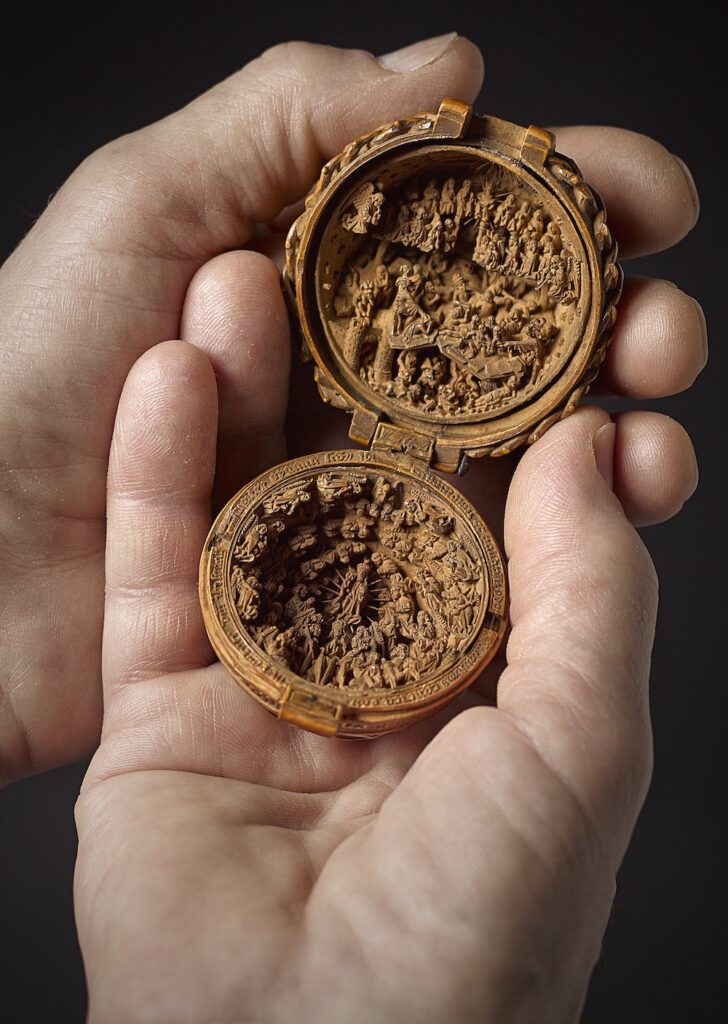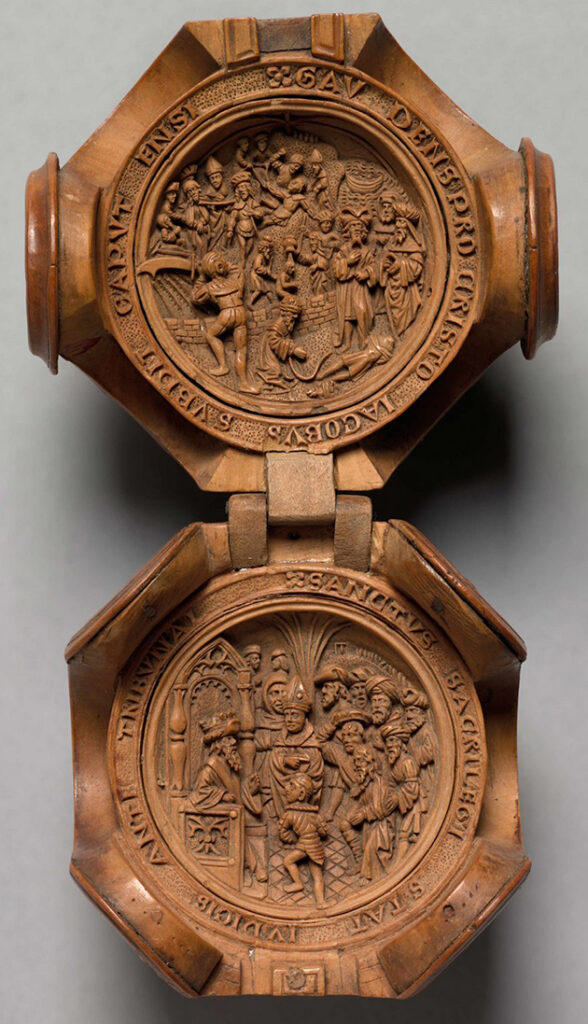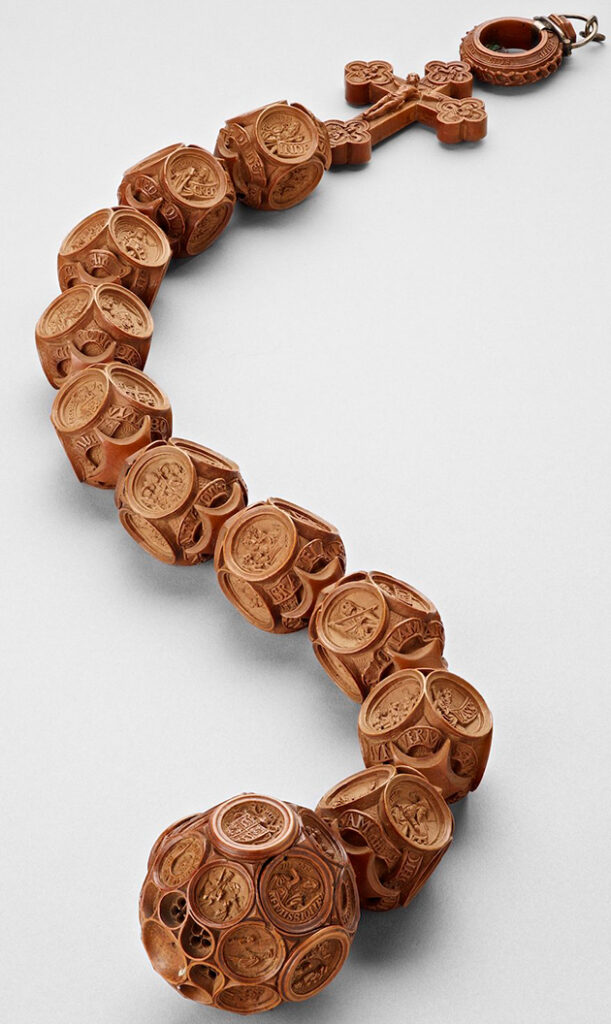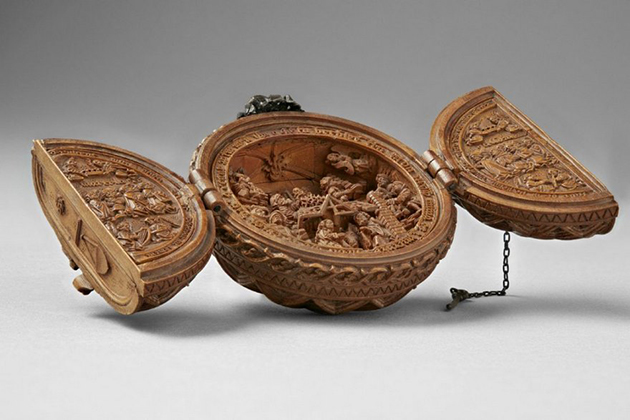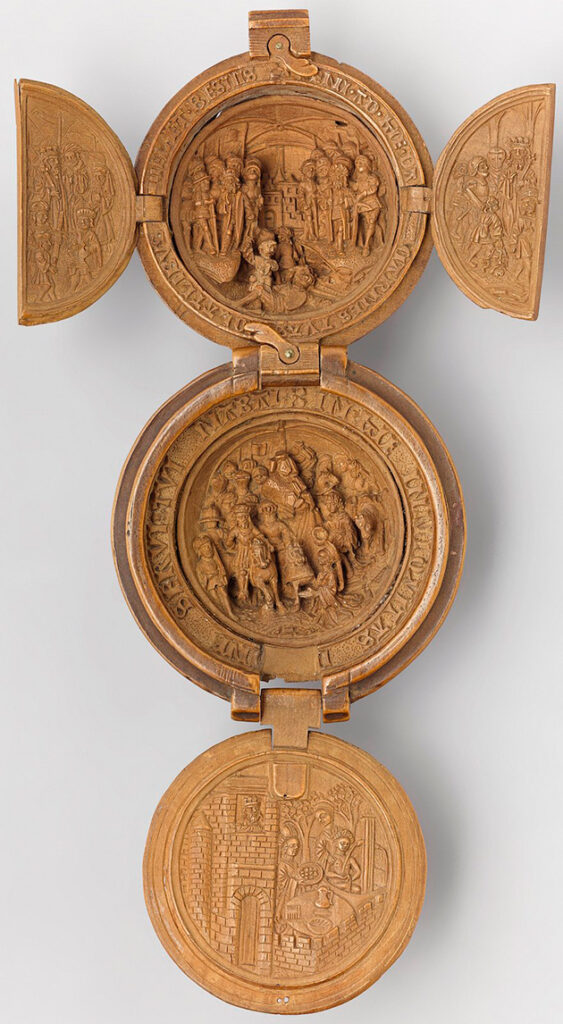Rare 16th Century Gothic Boxwood Carvings Are So Miniature Researchers Used X-Ray To Solve Their Mysteries
The tiny boxwood sculptures are so perfectly crafted that the naked eye cannot see details that reveal their construction.
New research and cutting-edge scientific imaging have revealed that each carving is an intricate three-dimensional jigsaw puzzle.
Knowing how the carvings were made only raises more questions about what motivated their makers. Working without electric light or sophisticated magnification, these artists achieved a virtuosic degree of detail.
When first discovering the intricate carvings in prayer beads and altarpieces, viewers most often respond with a sense of wonder.
This effect fulfills, no doubt, part of the artist’s intention, as well as the desire of the original owner. Fascination is followed by a desire to understand how and by whom these extraordinary and delightful objects were made.
Between 1500 and 1530 wood artists in Flanders and the Netherlands created off of the most exquisite miniature religious wood carvings ever seen.
Known as woodbox carvings there are only 135 of these artifacts known to exist.
These miniature pieces of art are extremely detailed, the details of which were only truly appreciated after these miniature works of arts were examined by Micro-CT scans, advanced 3D analysis software, microscopes, and X-rays.
The inner layers of these tiny carvings are pieced together so well that the joints could only be seen using microscopes and X-rays.
It is a wonder that the original artists of these works were able to craft cravings so finely detailed and involved without the aid of modern equipment. Pins, smaller than a grass seed were used to hold some of the woodwork in place.
However, despite the use of modern technology much of the production process of these carvings remain a mystery due to traces of gold which blocked much of the X-rays “view.”
Part of the draw of these wonderful wood boxes is the fact that much of how they were made remains a true mystery adding to both the intrinsic and artistic value of these little works of art.
These carvings were created out of a demand for quality portable religious carvings in Europe prior to the reformation period.
However, once attempts were underway to reform both the Protestant and Catholic church the need for miniature accessories were no longer in high demand.
